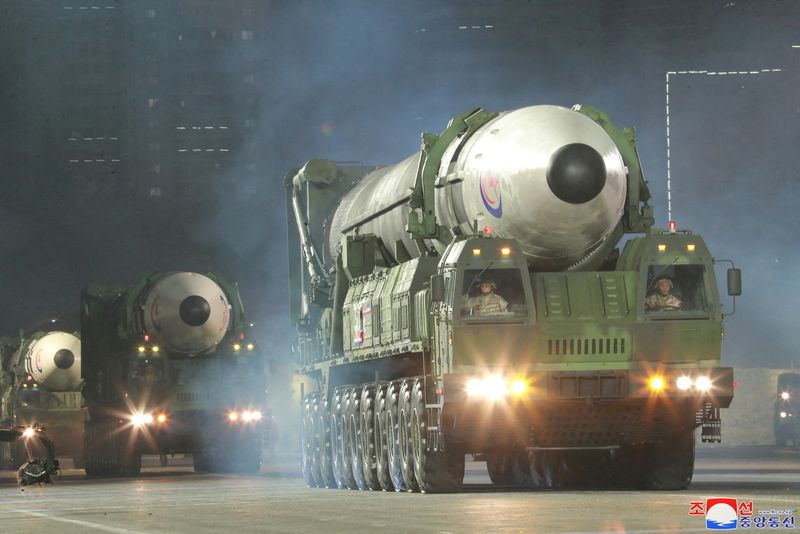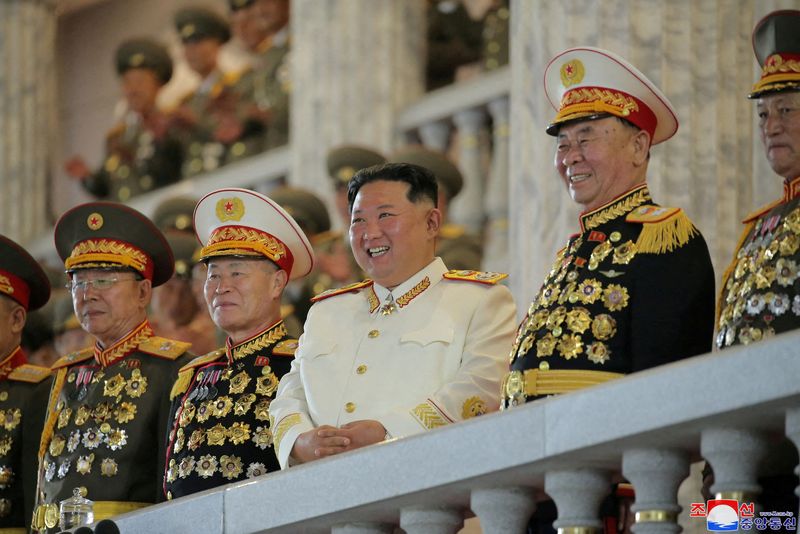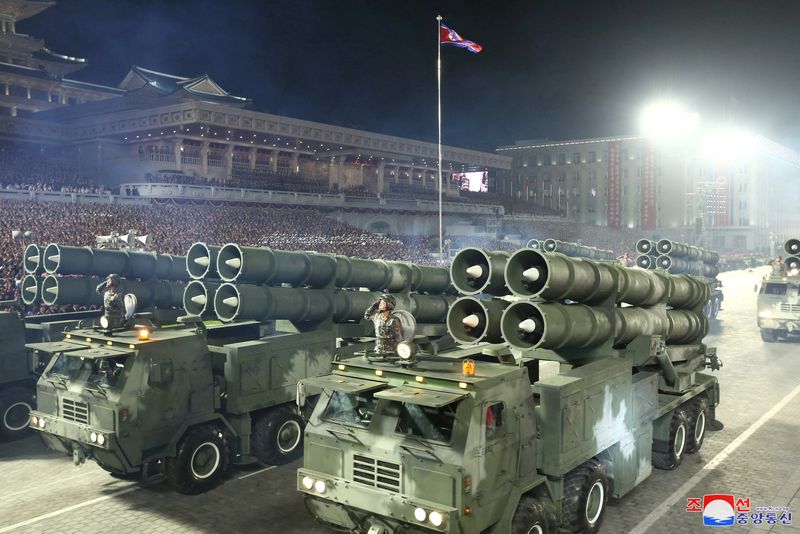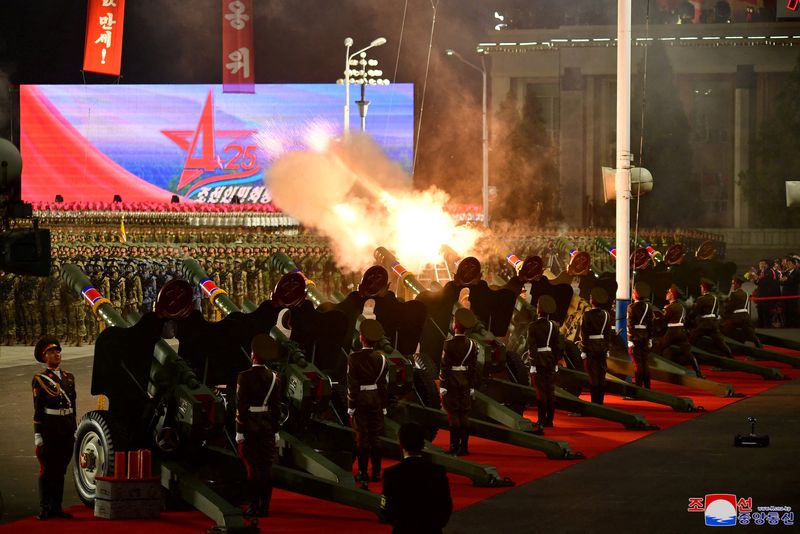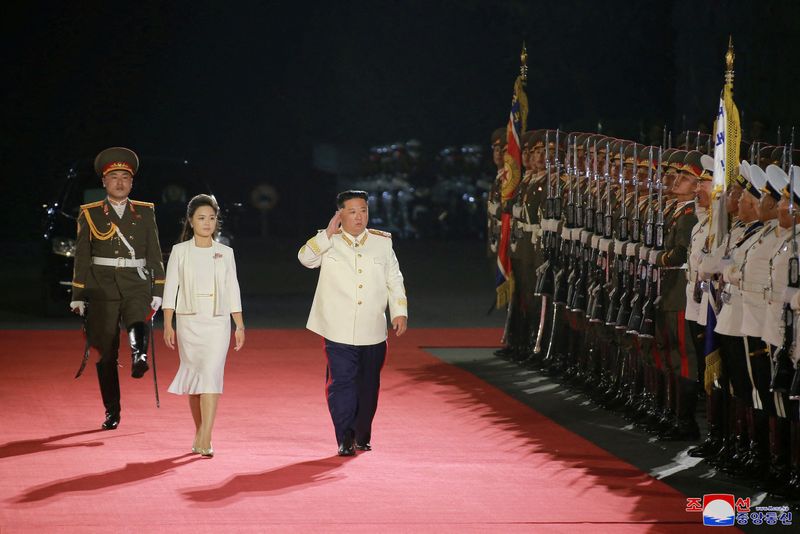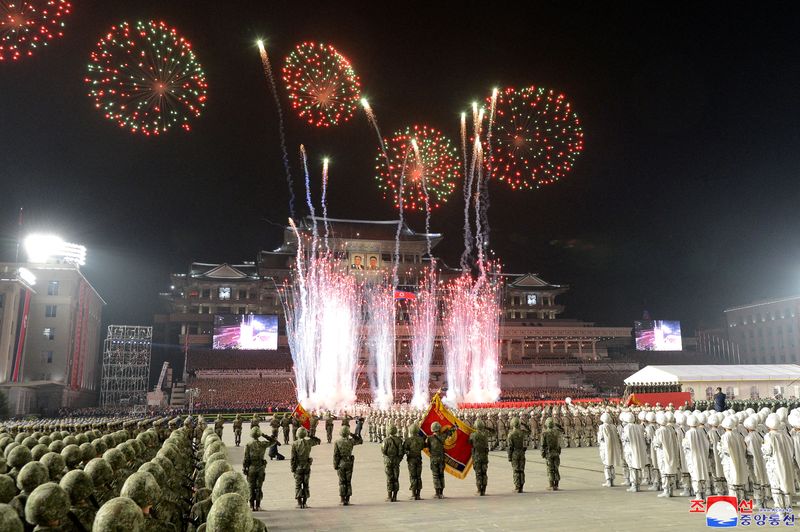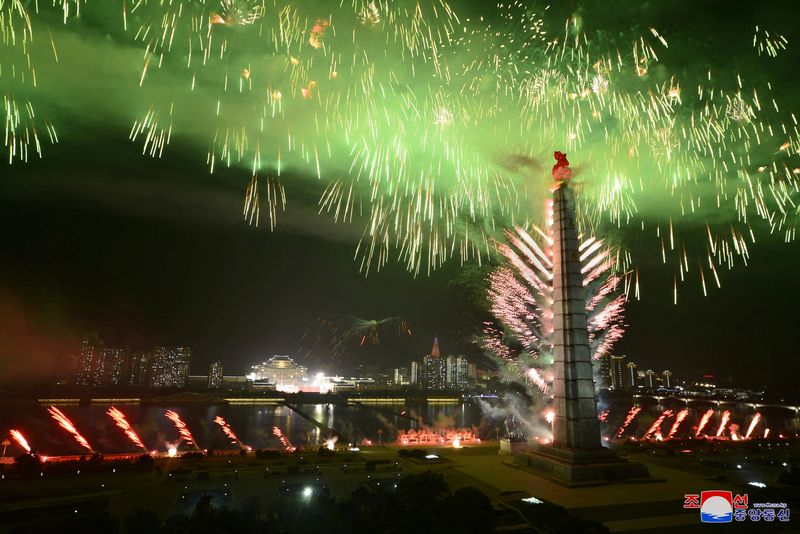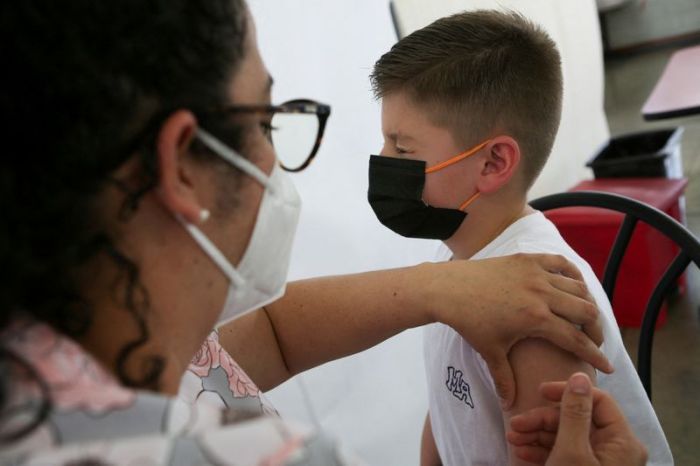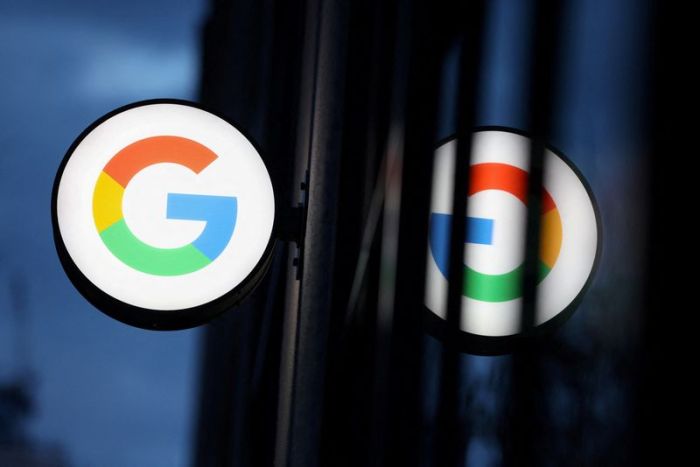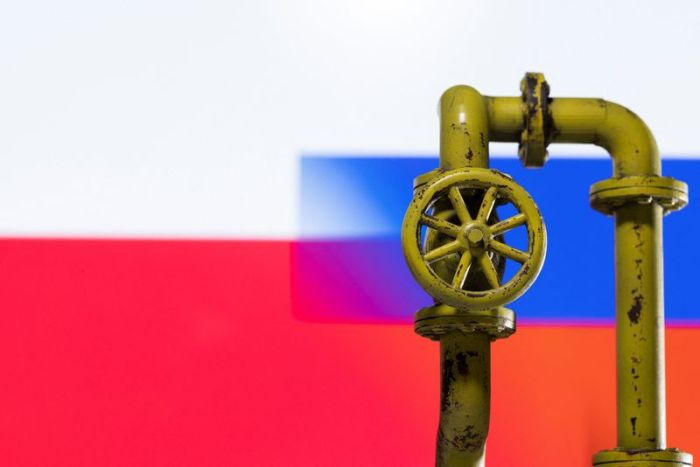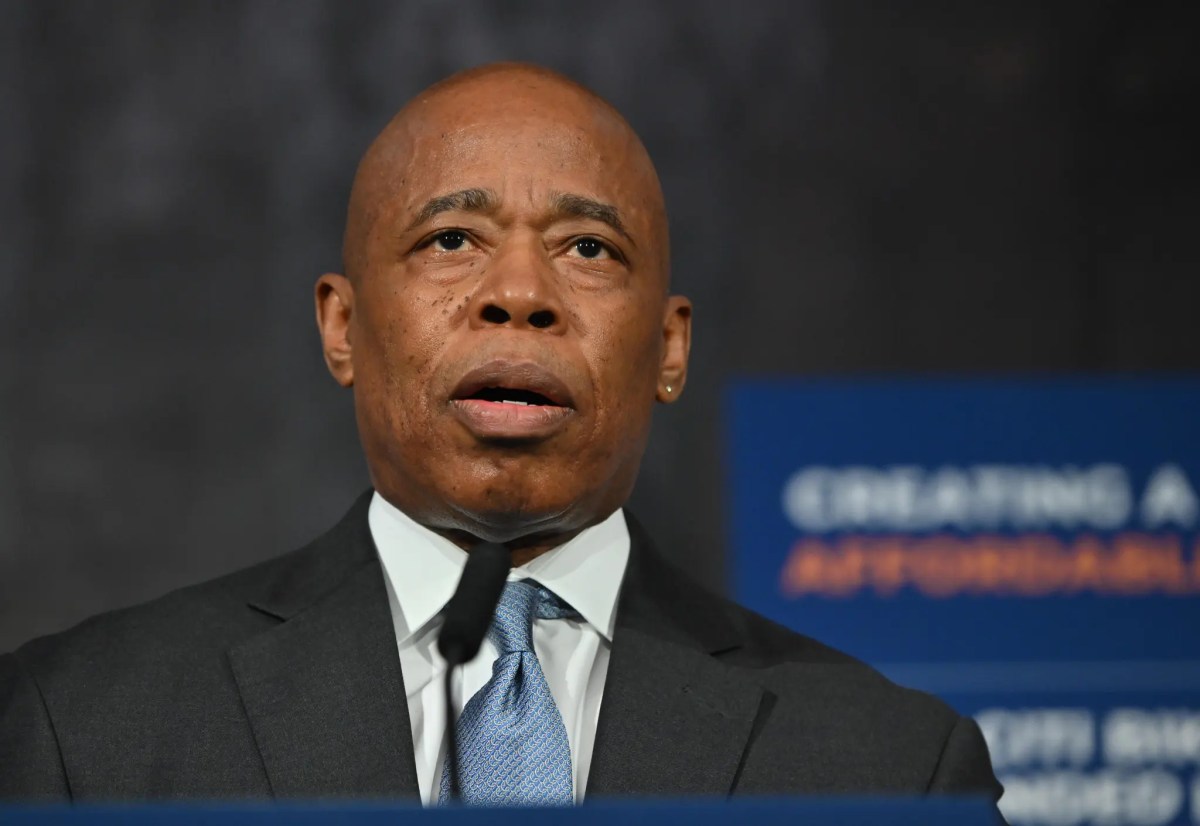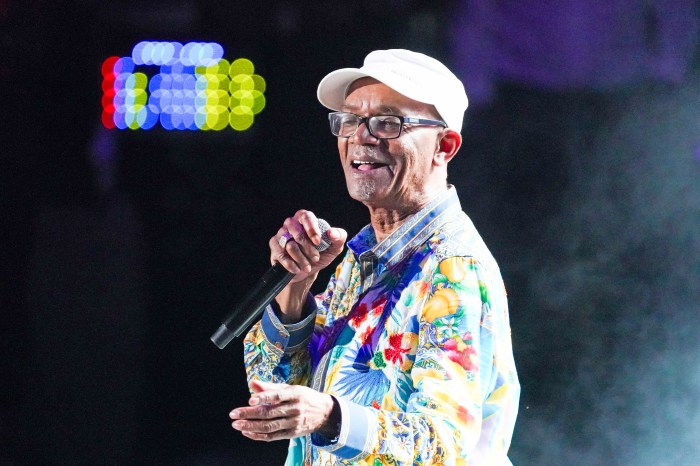SEOUL (Reuters) -North Korean leader Kim Jong Un has pledged to speed up development of his country’s nuclear arsenal while overseeing a huge military parade that displayed intercontinental ballistic missiles (ICBMs), state media reported on Tuesday.
The parade took place on Monday night during celebrations for the 90th anniversary of North Korea’s armed forces, the state news agency KCNA said.
Pyongyang has recently stepped up weapons tests and displays of military power as denuclearisation talks with the United States have stalled and a new conservative administration takes power in South Korea.
U.S. and South Korean officials say there are signs of new construction at North Korea’s only known nuclear test site, which has been officially closed since 2018, suggesting Pyongyang may be preparing to resume testing nuclear weapons.
“The nuclear forces of our Republic should be fully prepared to fulfil their responsible mission and put their unique deterrent in motion at any time,” Kim told the gathering, according to KCNA.
He said the fundamental mission of the North’s nuclear force was deterrence, but that its use “can never be confined to the single mission”.
“If any forces try to violate the fundamental interests of our state, our nuclear forces will have to decisively accomplish an unexpected second mission,” Kim said.
Hong Min, a senior fellow at the Korea Institute for National Unification in Seoul, said Kim’s speech could signal a change in his nuclear doctrine to leave open the possibility of “nuclear first use”.
“Though he did not specify what makes the ‘second mission’ or ‘fundamental interests’, he indicated more broadly that the nuclear force might be used pre-emptively, not only when they’re under attack, but also under certain circumstances,” Hong said.
Yang Moo-jin, a professor at the University of North Korean Studies in Seoul, said Kim’s remarks could have been aimed at the incoming government of South Korean president-elect Yoon Suk-yeol, who has warned of possible pre-emptive strikes if an attack from the North is imminent.
WEAPONS SHOWCASE
Yoon takes office on May 10. His transition team criticised Pyongyang for developing offensive weapons while appearing to pursue talks.
“The parade proved that North Korea has outwardly called for peace and dialogue over the last five years but in reality it focused on developing the means to threaten not only the Korean peninsula but Northeast Asia and world peace,” deputy spokesperson Won Il-hee told a briefing.
“Securing the capability to deter North Korea’s grave and real threat is the most urgent task,” he added, vowing to bolster an alliance with the United States and expand Seoul’s deterrence.
Dressed in a white emperor-style suit, a smiling Kim waved and shook hands with senior officials when North Korea’s largest known ICBM, the Hwasong-17, appeared in the parade, state television footage showed.
The missile was unveiled in 2020 and first tested last month, but Seoul officials believe it exploded in mid-air.
The video featured what appeared to be hypersonic missiles and submarine-launched ballistic missiles (SLBMs) being carried on trucks and launch vehicles.
Kim saluted as a squad of people wearing orange hazardous material suits and gas masks, an apparent symbol of anti-coronavirus efforts.
The procession also included rows of conventional weapons such as rocket launchers and prototype tanks, plus tens of thousands of goose-stepping troops shouting “Long life!” to Kim Jong Un.
North Korea is banned by United Nations Security Council resolutions from developing ballistic missile and nuclear weapons, and is under economic sanctions as a result.
In Washington, the Pentagon said North Korea’s nuclear and ballistic missile programs were a serious threat to international security.
“We will focus on reducing the threat to the United States and our allies, as well as improving the lives of the North and South Korean people,” a Pentagon spokesman, Lieutenant Colonel Marty Meiners, said in a statement.
U.S. State Department spokesperson Ned Price said at a press briefing that Kim’s comments at the military parade reinforces “our assessment that DPRK (North Korea) constitutes a threat to international peace and security and to the global non-proliferation regime”.
On April 16, Kim oversaw the launch of what state media said were short-range missiles that could deliver tactical nuclear weapons.
Visiting Seoul last week, U.S. envoy on North Korea Sung Kim vowed to “respond responsibly and decisively to provocative behaviour,” while underlining his willingness to engage with Pyongyang “anywhere, without any conditions”.
North Korea has said it is open to diplomacy, but has rejected Washington’s overtures as insincere and criticised what it calls “hostile policies” such as sanctions and joint military exercises with the South.
(Reporting by Josh Smith, Soo-hyang Choi and Hyonhee Shin; Additional reporting by Jack Kim and Minwoo Park; Editing by Christopher Cushing, Gerry Doyle and Sandra Maler)

